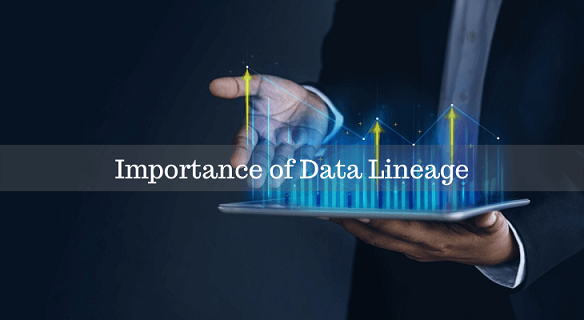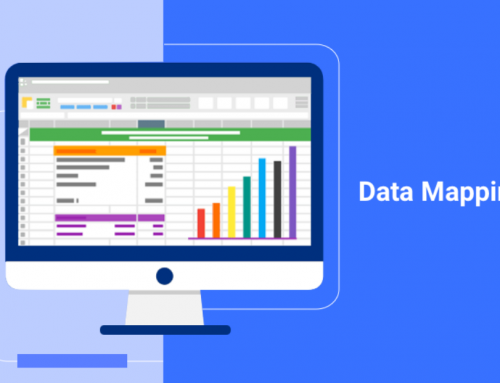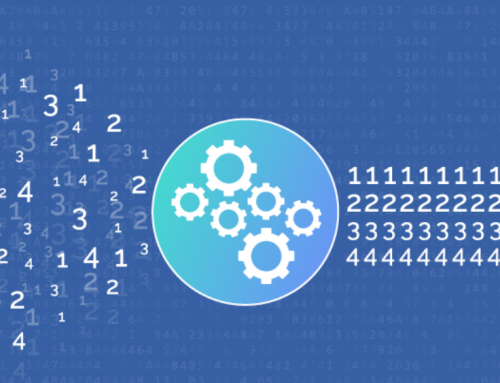Top 3 Benefits of Data Lineage for Your Business
Data lineage is the process of identifying the path from a data source to its current location, which records how data is processed, transformed, and transmitted. A company can benefit from data lineage in many aspects. In this article, we’ll take a closer look at the top 3 benefits of data lineage for your business.

Benefits of Data Lineage
To make data-driven decisions successfully, a company needs to know what data they are using, what it means, where it comes from, and whether the data is complete and reliable. It’s almost impossible to decipher this information without a data lineage. Because of this, many companies invest in data lineage because it provides complete context around the company’s data and ensures that trusted data is used to drive business decisions.
What are the top 3 benefits of data lineage?
Data lineage can benefit the entire company, from IT to the business, providing the necessary visibility and context to the company’s data, and freeing up time for IT to focus on strategic planning rather than manually mapping data. Here are top 3 benefits of data lineage for your business:
- Comply with regulations: For regulatory purposes, such as BCBS239, CCPA and GDPR, mapping data traceability is not easy. This can take untold hours and can result in fines and penalties if done wrong. Data lineage supports risk management and data governance teams, tracks how data flows from source to destination through various systems, and enables risk management to view audit trails of all data transformations.
- Better understand and trust data: The business users can benefit from the data lineage because it provides them with necessary context surrounding a company’s data. Data lineage ensures that accurate, complete, and reliable data are used to drive business decisions because it shows the user complete contextual data, such as where the data comes from, how the data set is constructed and aggregated, the quality of the data set, and the process of transforming the data.
- Save time doing manual impact analysis: Data lineage allows IT departments to conduct impact analysis at the granularity level-columnar, table, or business report, so that any changes to downstream systems can be seen as changes are made to the data, which saves IT departments more than 98 percent of their manual analysis time.
Why track data lineage for your company?
One of the crucial steps in becoming a truly data intelligent company is tracking data lineage. Big corporations have their data stored in 100 to 100,000 systems and data sets across the enterprise, including on-premises, hosted, and in the cloud. Besides, data continues to increase at an exponential rate, which makes it difficult to track where the data is coming from and how it has changed over time.
IT team and business users benefit from data lineage which provides end-to-end visibility into where data is stored, where it comes from, and where it goes. This visibility helps IT teams do their jobs more quickly and efficiently, and gives them more confidence in their data. As a result, they can use it to make insightful business decisions.
What are the techniques of data lineage?
- Lineage by parsing: It automatically reads the logic used to process the data. Using this form of data lineage makes it easy to capture changes across systems because it tracks the data as it moves. However, it requires a high level of understanding of the programming language or tools used throughout the data life cycle.
- Lineage by data tagging: The transformation engine tags data that is transformed or moved. It then traces the tag from beginning to end to generate a lineage representation. Nevertheless, it only works if you have a consistent transformation tool to control all data movement.
- Pattern-based lineage: It uses patterns to perform lineage rather than code that processes transformed data. It relies on metadata to create lineage by looking up patterns. The main advantage of this technique is that it only looks at the data, unlike the data lineage of parsing techniques, the pattern-based lineage does not require knowledge of any programming language to process the data. It monitors data, not algorithms.
Conclusion
Thank you for reading our article and we hope it can help you to have a better understanding of the top 3 benefits of data lineage. If you want to learn more about the benefits of data lineage, we would like to advise you to visit Gudu SQLFlow for more information. Gudu SQLFlow, as a data lineage analysis tool, can not only analyze SQL script files, obtain data lineage, and perform visual display, but also allow users to provide data lineage in CSV format and perform visual display. Thanks again! (Published by Ryan on Apr 29, 2022)
2 Comments
Leave A Comment
If you enjoy reading this, then, please explore our other articles below:




[…] tools available on the market today, Gudu SQLFlow can not only analyze SQL script files, obtain data lineage, and perform visual display, but also allow users to provide data lineage in CSV format and perform […]
[…] tools available on the market today, Gudu SQLFlow can not only analyze SQL script files, obtain data lineage, and perform visual display, but also allow users to provide data lineage in CSV format and perform […]